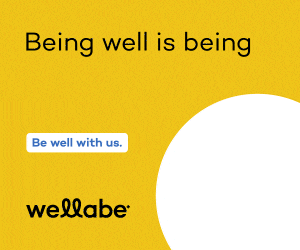Industry Phonetable pt.2: three new social media tools
Chris Conetzkey: We got three social media experts, each of whom runs a local social media consulting business, on the phone and asked seven hot questions pertaining to their industry and its impact on the business world. The first three questions appeared in this week’s Business Record (Read them here). Here are two more questions. Check back Thursday for the final two questions. Follow us on Twitter @businessrecord or go to http://tinyurl.com/BRfacebookfan sign up for our Facebook Fan page. When you do, you’ll be sure to get updates when new content is available on our site.
Question 4 –
Conetzkey: Is there a new technology or tool gaining popularity that businesses should be aware of?
Glynn: One that I really like that is kind of on the rise, but still a little bit obscure, is Stickybits. It is an application for Android and iPhone right now, but you can scan any bar code, not just 2-D bar codes but 3-D bar codes too. This one you can scan any bar code anywhere in the world. Essentially you can go to the grocery store and scan a bottle of Heinz ketchup with your phone and upload your favorite Heinz ketchup recipe, and a minute later someone in Japan can scan the bar code for Heinz ketchup and get your favorite Heinz recipe right from it. So it is an interesting way to be able to share information. You can essentially attach any digital information you want to any bar code. So a birthday card, you could scan the bar code on the back and attach a video of the family singing “Happy Birthday,” and when the person gets it, they can scan the bar code and see the whole family singing “Happy Birthday.” I think at some point the more it becomes popular, you could attach digital coupons to products in grocery stores. I think there are a lot of opportunities for things that you could do with that.
Wright: If there is one new thing you need to understand, especially if you are a brick-and-mortar business, it’s Foursquare (a location-based social networking site that allows you to “check into” a location on a smart phone and broadcast it to the world). You need to understand that yes, people will be using these applications to check in and say they are at your business. So that alone is a pretty intimate endorsement because it broadcasts out to all their other social networks. So businesses can offer rewards to the mayor of the business (someone who checked in the most) or also use proximity-based marketing, which is if you are within a block or so of the business and you check in elsewhere, you can serve up an offer to that person who is standing nearby and say drop on in for a free coffee. That is important for marketing, but also for understanding what people are saying about you. You should go into Foursquare and see if you can see your business represented there. People can leave tags and tips behind for their friends. So if you are a coffee shop and you see one of the tags is “no Wi-Fi,” you need to understand that people will use Foursquare to find you if they are from out of town, and they are not familiar with the city, they may use Foursquare. And if it says “no Wi-Fi,” you could potentially lose customers.
Stineman: I think some of the proprietary and brand networks, which is something that I think is emerging and one of the areas that I see real growth potential and honestly current growth. I saw an interview recently with the leaders of Ning.com (a free tool that hosts a Web site that is a network similar to a Facebook fan page that the owner controls). Ning is growing at about 5,000 new Ning networks per week, which is a great growth rate for them. It is one of those platforms that I think the nonprofit community is tapping into that really well. I think it has huge potential for organizations. There are ways for companies to have more than the basic or the free Ning network where they can have it more branded. They can have it more customized by paying a fee. Then there are also some wonderful developers out there within companies and also consultants who are building proprietary networks for corporations. If it’s a client that is a bigger client and has a decent presence and a decent following, I encourage them to look at that as an option, because having a proprietary network, you set the rules. You are not following Facebook’s rules, which are what they are today, but might not be the same tomorrow. You have more of a way to communicate and encourage communication within your community. What we have seen on a couple of the Ning networks that I have been a part of is there is a lot more opportunity for organic interaction and a lot more opportunity to translate or convert people that are your followers or your friends into action. Which I think is a more difficult translation to make on some of the external social networks.
Question 5 –
Conetzkey: Can you give a couple of examples of businesses that are doing a good job using social media?
Glynn: Panera Bread does a great job of it. Panera Bread on Facebook has 250,000 fans roughly, and what they realized is that people become fans of their business because they like their products. So it wouldn’t make sense for Panera to be talking about hardware or something like that; it makes sense for them to stick to what they do best. They are constantly posting questions, and they get hundreds of responses from people that like it and make comments below. Mars Café, locally, does a pretty good job. They do a great job connecting with people and they are a lot of fun and they are constantly posting things and they give a discount to the mayor on Foursquare. I just think they are a good local example of someone that is doing a good job staying connected with the community.
Wright: Panchero’s Mexican Grill is really good. They have really consistently done a good job, and they have a guy who is devoted to it full time, and that’s his job. He is always on top of things. He is extremely responsive to any mention of them out on the platforms. He finds creative uses for it as well. He really floods the system. You can’t forget about Panchero’s once you are hooked up to them on Facebook or Twitter. They are not in your face, but they are always doing something like trivia or things like that. SmartyPig.com is also another good example.
Stineman: I think a lot of the smaller businesses and mid-sized businesses are using it well. I think Kum and Go LC is a good example of a local business that is using it well. I think there is more that can be tapped into, but I’m glad to see what they are doing so far. Kum and Go is doing a great job on both Twitter and Facebook, and they did a really nice job with their Haiti efforts. I think what I really like about McDonald’s Corp. is that they have customized their page in a way that stands out from others. And they are driving the conversation that engages the audience, but doing so in a really diverse way. It is not just about “Go to McDonald’s and get X, Y and Z deals today.” It is engaging them and asking them what their favorite dip is for Chicken McNuggets. And they are really getting a lot of responses from those things.
See their responses to questions 1-3 and 6&7:
1.) How are businesses utilizing Google Buzz?
2.) Who will win, Google or Facebook?
3.) What will social media be in 3-5 years?
6.) How should businesses approach advertising with social media?
7.) What common mistake do you see?








